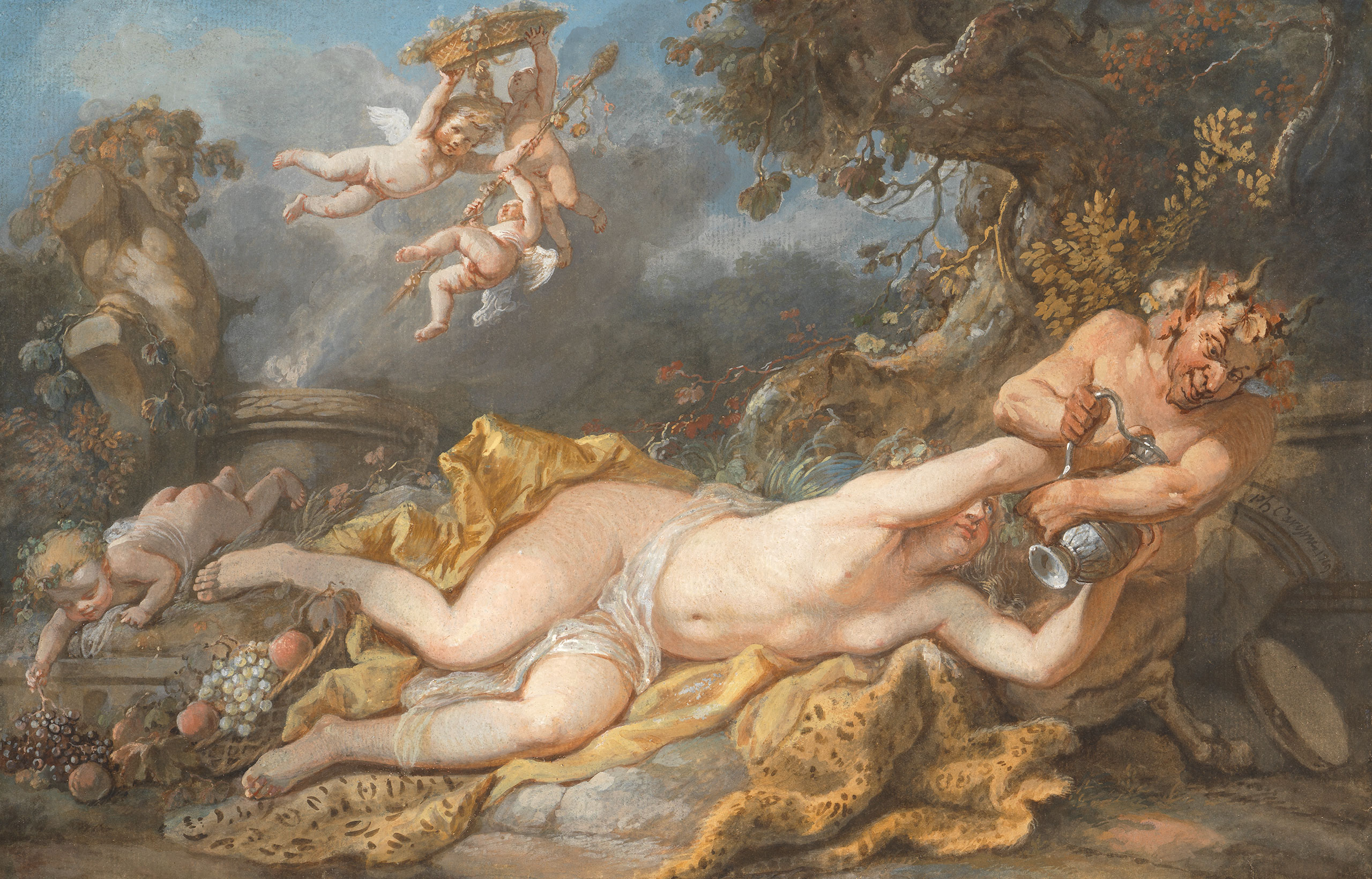
Caresme
Jacques-Philippe
A Bacchanal
Gouache on paper laid down on board.
Signed and dated Ph Caresme 1769 center right.
231 x 356 mm (9 1/16 x 14 in.)
Provenance
Paris, Hôtel Drouot, 3 March 1987, lot 4; Paris, Hôtel Drouot, 29 November 1985, lot 21; private collection.
The son of Claude-François Caresme, an amateur draftsman and advisor to the Académie Royale de Peinture et de Sculpture, and Françoise Aimée Coypel, Philippe Caresme was Noël Coypel’s grandson. He studied with his cousin Charles Antoine Coypel, first painter to the king. He won several medals at the Academy and competed for the grand prix three times, but was only awarded second prize in 1761 for his painting of Judith and Holofernes. He did not go to Rome, but was admitted to the Académie in 1766 with his Saint Louis receiving the crown of thorns, and exhibited at the Salon the following year. He received several important commissions, including three works in a cycle on the life of the Virgin, in which Nicolas-Guy Brenet and Jean Bardin also participated, for Bayonne Cathedral. Caresme painted the picture for the cathedral choir. He was also commissioned to paint mythological pictures on Ovidian subjects for the Petit Trianon at Versailles in 1772: Myrrha metamorphosed into a shrub and Mint changed into a plant.
Involved in a scandal that the correspondence between the painter Jean Baptiste Marie Pierre and the Comte d’Angiviller mentions but does not explain, he was expelled from the Académie in 1778. The man who had proudly signed with his the title “peintre du roi” (King’s painter) was thus isolated, and resumed what he had in fact always done alongside his painting: illustration. From the earliest days of his career, Caresme had devoted himself to illustrating works, notably for Jansenist circles against the Jesuits. Surprisingly, at the same time, i.e. in the early 1760s, he produced his first so-called “colored” drawings, in gouache or pastel, of erotic subjects and bacchanalia, which were widely disseminated by the engravers Flippart, Janinet and others. These gouache works, halfway between drawing and painting, were particularly popular with art lovers at the time.
Caresme stopped painting after his exclusion, but produced a large number of these so-called licentious works, mainly bacchanals and tavern scenes. More suggestive than truly pornographic, the works that have come down to us – though many may have been destroyed, as was the case with those deemed obscene – bear witness to an “art of assemblage”, as Marie Fournier puts it1: the artist reuses the same figures and accessories over and over again, simply varying the positions. For example, our Bacchante, strangely reclining on a panther skin, her outstretched arms clutching a bottle of wine, is reminiscent of another Bacchanante in a gouache formerly in the George Bourgarel’s collection,2 clutching the back of a satyr. This distortion of a body somewhere between masculine and feminine is transgressive in itself, as are the blasphemous winged loves holding a basket of fruit and a thyrsus, a symbol of hedonism and fertility; the artist has diverted the Christian motif of cherubs holding palms or martyrs’ crowns.
-
Marie Fournier, « Jacques Philippe Caresme (1734- 1796), dessinateur licencieux ? », Douzièmes rencontres internationales du salon du dessin, Paris, 22-25 March 2017, published in December 2017, p. 57.
-
Signed and dated 1765, this gouache was exhibited in Les petits maîtres du XVIIIe siècle, Paris, 1920, n° 174. It appears in the sale of Georges Bourgarel’s drawings on 15-16 June 1922, lot 20. It then belonged to René Kieffer and was in his sale in Hôtel Georges V, 29 May 1969, lot 6.

